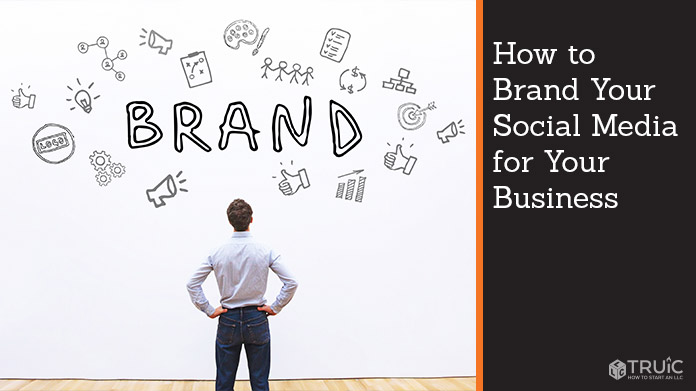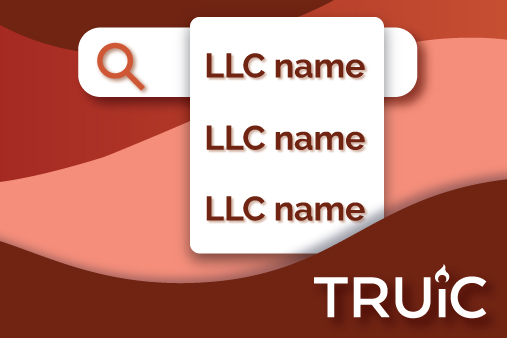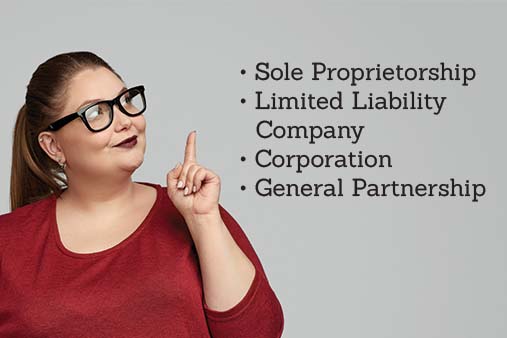How to Brand Your Social Media for Your Business
Social media can seem like a vast space when you’re unfamiliar with it, and that’s largely because it is. The basics are pretty universal (e.g., posting images, writing posts, asking for followers, etc.), but it takes a lot of effort to pull off a successful campaign. Branding means knowing what kind of voice you want to present and promote, and then using different marketing elements to support that message. We’ll look at how you can implement a few tactics to fine-tune your strategy and set you up for success.

Social Media Branding Basics
A Wide Audience
Before you dismiss social media marketing, remember that there are nearly as many social media users as there are internet users (about 3.8 billion overall). Whether you’re advertising to people in the neighborhood or to people across the ocean, there are so many opportunities to be found here.
It’s why you need to think long and hard about what you want your brand to portray. Too broad, and no one will remember you. Too specific, and you might miss out on an important slice of your demographic. (Incidentally, these are the same tips that you’ll hear about designing your logo.)
You’re giving customers a perception not just of what you can do for them but of what you stand for overall. Branding works for both big and small companies alike, and everyone has one. Even companies that aren’t actively marketing themselves still create an impression in the public eye.
One bonus of social media is that it’s free if you’re willing to put in the work. So this is not the time to make an excuse that you don’t have the budget to compete for attention on social media. And if you need a more comprehensive set of instructions before you get started, try our Social Media Guide for Small Businesses.
What Your Social Media Should Focus On
Branding on social media is not just about the amount of followers you have, it’s also about sparking genuine interest and driving awareness and conversion. You’re better off having one follower if that follower is actually supporting you than 10,000 followers who aren’t.
You’re aiming to improve your customer service and increase loyalty here. Every post, image, emoji, etc. should be somehow related to your company, its values, or what makes it different. If you’re unsure what this means for your company, you may need to head back to the drawing board and make your mission statement a little bit more concrete.
Should You be on all the Social Media Platforms?
The answer is not necessarily. Sometimes, it’s better to just do one. If your audience is on both Facebook and Twitter, there’s no need to repeat the same things to the same people. The key is to be consistent no matter which platform you’re on. That means posting frequently and ensuring that the colors, styles, and wording of your brand are all recognizable.
Being consistent doesn’t mean that you can’t switch up your strategy for different platforms though. (After all, you should aim for brevity on Twitter whereas you can say a little more on Facebook.) However, it does mean that you need a strong voice that can be recognized whether someone’s looking at your Instagram or TikTok persona.

Work Your Logo
Your logo says a lot on social media, and sometimes it’s the only thing that people really see when they visit a page. It can (and should) be featured on your profile page as a symbol of your brand. You can think of it as an anchor to your company’s personal philosophy, one that you should be showing off any chance you can get. If you need help designing your logo, check out our Free Logo Generator tool.
From the main image to your individual posts, working the logo is kind of like creating a catchy jingle. When social media is mostly soundless, your visual artwork might serve to stick in people’s minds. Whether you’re making a comment or writing a post, consider dropping your logo somewhere in there. Sure it’s repetitive, but it also serves as a way to drive home your values no matter what you’re posting.
For instance, if someone had a negative experience with a customer service rep, you might ask how the situation could be better handled in the future and put your logo in after the question. This public statement is a way to show that your brand is interested in what customers have to say and how it can go the extra mile next time.
What are the Best Logo Sizes for Social Media?
Each social media platform has different sizes they require for different sections of their site or app. For example, the cover image on Facebook is a lot larger than the profile image. Most social media platforms only accept file formats like .JPG and .PNG which are called raster images. This means that they can scale down, but they don’t scale up very well. If you have your logo set to the profile image size and then try to use that same image for your cover image, it will be fuzzy and look unprofessional.
This means that it is a good practice to get the correct image size for all the different sections of the social media platform you plan to use. Below we have a list that shows every social media platform and the different sizes you will need for your logo.
Logo Sizes for Twitter
Twitter profile picture: 400 x 400 pixels
Twitter header photo: 1500 x 500 pixels
Twitter shared image: 1200 x 675 pixels
Logo Sizes for LinkedIn
LinkedIn personal profile image: 300 x 300 pixels
LinkedIn company logo size: 300 x 300 pixels
LinkedIn personal background image: 1584 x 396 pixels
LinkedIn company cover image: 1192 x 220 pixels
LinkedIn shared image: 1200 x 627 pixels
LinkedIn main image & company photos: 1128 x 376 pixels
Logo Sizes for Facebook
Facebook profile picture: 180 x 180 pixels
Facebook cover image: 820 x 312 pixels
Facebook shared link image: 1200 x 717 pixels
Facebook event image: 1920 x 1080 pixels
Logo Sizes for Instagram
Instagram profile picture: 110 x 110 pixels
Instagram photo thumbnail: 161 x 161 pixels
Instagram photo size: 1080 x 1080 pixels
Instagram Stories: 1080 x 1920 pixels
Logo Sizes for YouTube
YouTube channel profile image: 800 x 800 pixels
YouTube channel cover photo: 2560 x 1440 pixels
Logo Sizes for Pinterest
Pinterest profile image: 165 x 165 pixels
Pinterest pin: 236 x 280 pixels
Pinterest board image: 222 x 150 pixels
Having the different sizes for your logo will ensure that your image will be crisp, clear, and professional. This will help you be able to get your business out into the public and eventually noticed by future customers.
Choose the Best Colors
Your color palette should be based on the colors you’ve chosen for your logo and overall marketing materials. You can experiment on social media, as long as you stay connected to the same theme that you’ve set up. For example, if your logo colors are tan and light green, you wouldn’t want to throw in a shock of pink. However, you could consider adding in a mocha color that you could use only on social media.
Keep in mind the psychology of color behind branding. In general, the bolder choices stand for youth, excitement, and a daring personality, while pastels tend to suggest gentleness and reliability. Black and can be used to connote power and luxury to your audience. Whatever you’re using just make sure that the shades are the same across both the web and print. It’ll make your brand look that much more professional.
Perfect Your Writing Style
You don’t have to be Shakespeare to write a social media post, but your language should reflect the personality of your brand. Whether you want to be an authority or a friend, the tone should be aligned with your general mission statement.
- Do you want to engage, entertain, or educate?
- Do you want to be humble or get straight to the point?
- Are you hoping to make people laugh?
There’s a general trend on social media to be light and playful, but this really should only be reserved for brands that actually are light and playful. Don’t be afraid to go your own way. It can end up being a breath of fresh air for your audience.
For example, you might see more success if you strike a more professional tone that treats the audience like adults and doesn’t mince words. If your brand were a person, what kind of person would they be? Older and wiser? A killer surfer? Would they feel comfortable using slang or are they such a professional that they would naturally only hang out with other professionals (and feel comfortable speaking in business jargon)?
The goal of your social media campaigns shouldn’t necessarily be to talk about how great your company is. You’re aiming to discard the corporate niceties and get down on the customer’s level. What do they care about? What are they chatting about? How do they feel about certain products? What are they asking for? Once you know the answers to these questions, you can start a conversation that matters.
Stitching It Together
Social media is a landscape that is anything but easy. The sheer breadth should be enough to inspire fear in the hearts of marketers. Like all branding tips, your goal is to strip away what you don’t need and focus on what you do. The right language, visuals, and tone can really give you the opportunity to attract people who will support you both financially and beyond.
If you need help with desiging a logo for your brand, check out our top 5 best logo makers of 2021 and find the best tool to help you get a logo for your small business.



